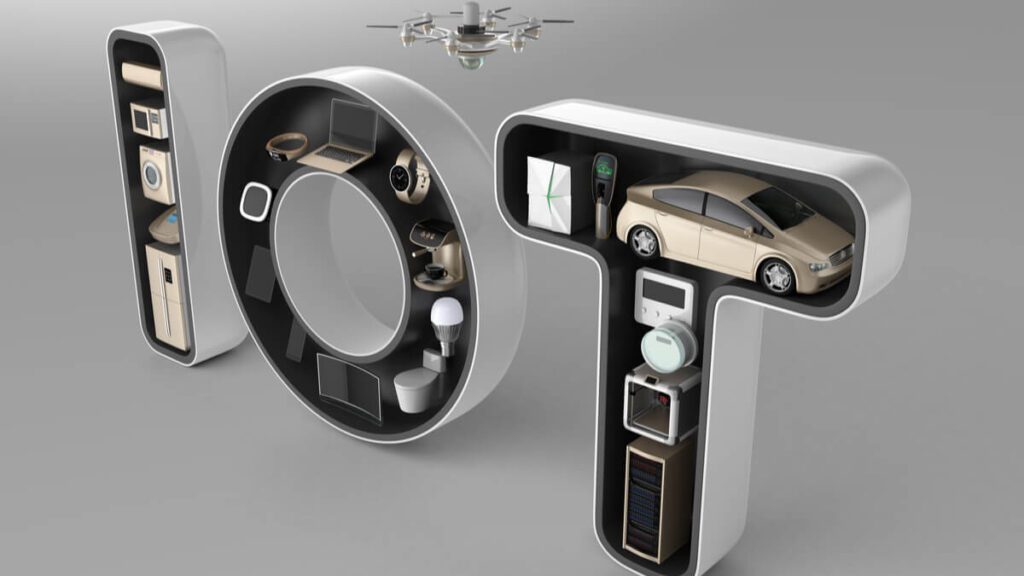
The sudden outbreak of the Covid-19 pandemic has impacted the state of countries, communities, and individuals in more ways than anybody expected; from complete the lockdown of schools to job losses across the board, while not undermining the loss of lives in its wake. And as governments and the private sector scramble to put out the fires caused by the pandemic, a glimmer of hope appears in the distance of what has been an exhausting year for everyone: IoT.
According to numbers by UK-based research firm Juniper Research, IoT platforms revenue will reach $66 billion by the end of 2020, a 20 percent increase over last year’s figure. This increase stems from companies looking to fortify their position in terms of supply chain and asset management against external factors.
And from a more commercial perspective, IoT-powered devices and solutions are proving their worth in today’s crisis, forging themselves to be a vital part of any company’s long-term technological roadmap.
However, one of the biggest hits economies across the world suffered is a retraction from globalization due to shorter supply chain during the pandemic; thus the focus has shifted to more local productions and internal distribution methods.
According to the IoT Business Index of 2020, only 18 percent of executives believed that supply chain management and logistics benefited from IoT-based insights more than any other business IoT initiatives in 2017— this number leaped to 28 percent in 2020.
Additionally, 38 percent of respondents in both 2017 and 2020 believed that data management and analysis profited the most from the IoT — both, of course, are key tools in keeping supply chains moving and businesses operational in times of crisis.
“Since the emergence of Covid-19, IoT adoption is swiftly and necessarily on the rise. The increasingly technology-driven enterprise must architect themselves around multi-layered security to protect their IoT device estates,” the Index highlighted.
When one studies the market, a noticeable shift has occurred pre- and post-pandemic; businesses all around were placing their focus and efforts toward expanding operations and taking globalization a step further.
In the 1980s and 1990s, the development or redrafting of the European Union, North American Free Trade Agreement (NAFTA), Association of Southeast Asian Nations (ASEAN), the World Trade Organization, and other regionalist entities reorganized the economic world order by creating new value chains.
The pandemic completely switched the narrative on its head, forcing the business community to invest in simpler, more transparent, shorter and more resilient supply chains that can act as a safety net in cases of contingency.
This can be noticed and observed by how former business and trade strategies are starting to reverse. Signs of this seemed to show in previous years, and the biggest example of this politics. A number of countries had already sparked the fire under companies to hasten their transition to more local production and distribution markets.
But this is where IoT has a bigger role to play; since it allows businesses to showcase their products on the global market, adding additional visibility and efficiencies in these newly created technological supply chains.
However, IoT won’t be the only one holding the line.
Artificial Intelligence (AI) is currently being spread throughout many businesses to ease the administrative burdens of certain services. While 5G carries these endeavors by offering lightning speed connections able to carry the message to as many people as possible.
What we’re seeing is just the tip of the iceberg of what new IoT-enabled technologies can do — for society and for the changing environment.
According to the IoT Business Index of 2020 “82 percent of organizations grew their IoT investments in the last three years, up from 62 percent who said the same in 2017. One in five businesses (20 percent) grew that investment by 50 percent or more.”
One challenge comes to the forefront in this case: cyberattacks.
According to the IoT Business Index 2020, 45 percent of business decision makers who had prior experience with IoT-powered solutions were concerned that security would be the main barrier of IoT adoption; even 37 percent went as far as to discourage their enterprises from integrating the technology within their roadmap strategy.
However, the emergence of Covid-19 has only quickened the adoption of IoT to capitalize on reaching larger audiences, increasing pressure on developers and tech companies to create products and services that are secure by design.
Now is the time for more accurate and reliable data and its transmission, thus organizations across the board will look to push the boundaries of their IoT-powered initiatives in an effort to meet the needs of the global market.